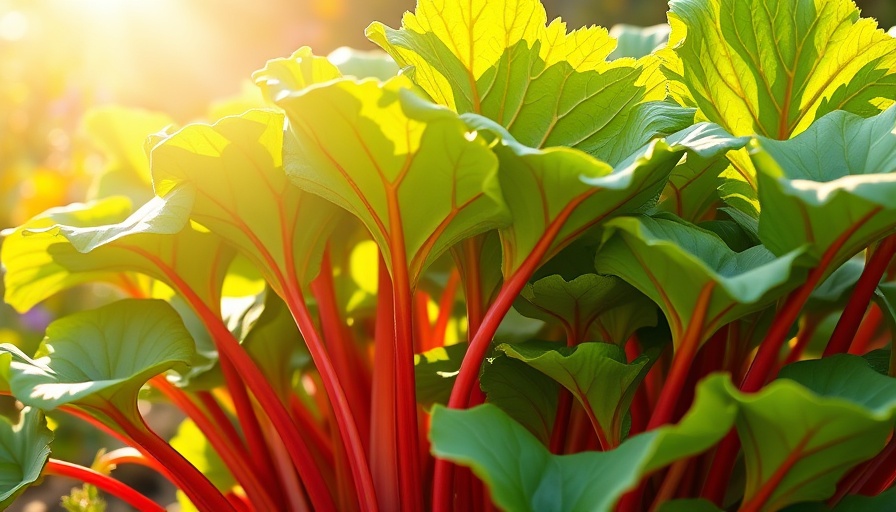
The Sweet Science of Growing Rhubarb in California
California's diverse climate offers a promising environment for perennial plants like rhubarb. This vegetable, prized for its tart flavor and vibrant stalks, can be a delightful addition to urban and suburban gardens alike. Featuring oversized, dark green leaves and resilient growth, rhubarb naturally enhances both the aesthetics and the productivity of your garden.
When to Harvest: Timing is Everything
Rhubarb's potential is fully realized after its third year of growth. This is when it matures enough for an abundant harvest, allowing the plant to establish its energy reserve in the crown. According to Laura Irish-Hanson of the University of Minnesota Extension, the ideal time to start harvesting is when the leaves are nearing their full size, which generally occurs between April and May. California gardeners should keep a close watch during this period as it's an exciting time when the rhubarb is at its best.
The Right Way to Harvest Rhubarb
Surprisingly, the best method for harvesting rhubarb is by hand, rather than with pruners or knives. Simply gripping the base of the stalk and twisting it off ensures minimal damage to the plant while preventing diseases from entering through cuts. It’s vital to remember that rhubarb leaves are toxic; after harvesting, the large leaves should immediately be removed and disposed of safely, ideally in your compost.
Do’s and Don’ts: Best Practices for a Healthy Harvest
To maintain a healthy rhubarb plant and ensure fruitful harvests season after season, it is essential to follow specific guidelines:
- Don’t harvest in summer: Once summer arrives, the petioles become tougher and woody.
- Don’t eat the leaves: Remember that rhubarb leaves are poisonous, so discard them properly.
- Keep it fertilized: Rhubarb is a heavy feeder and requires additional nutrients for optimal growth.
Maintaining a balanced approach to harvesting — taking only a third to half of your plant—ensures it has enough energy to thrive and produce fruits for many years to come. This practice leads to sustainable gardening, aligning with modern principles of environmental stewardship.
Future Trends: Sustainability Meets Gardening
As more Californians embrace home gardening, sustainable practices are becoming increasingly popular. Rhubarb stands as a shining example of a low-maintenance and resilient plant that yields consistent results. Engaging in gardening not only nurtures the environment but fosters a sense of community and well-being.
Inspiration: The Joy of Homegrown Rhubarb
Imagine enjoying a delightful rhubarb pie made from your own backyard harvest. The sense of accomplishment gained from nurturing your plants throughout the year culminates in delicious homemade treats. Beyond the flavor, such moments create cherished memories and demonstrate the fruits of your labor.
Next Steps in Your Gardening Journey
Armed with the knowledge of how to harvest rhubarb effectively, it’s time to take action! Make the most of your garden space by planning for that abundant rhubarb harvest. Whether you're a seasoned gardener or just starting your journey, ensuring the health of your plants will pave the way for continued rewards.
For California homeowners interested in enhancing their gardening skills, consider researching local gardening groups, perhaps joining a community that shares the passion for growing fresh produce. The thrill of gardening goes beyond the harvest; it invites connections with nature and fellow enthusiasts alike.
Join the growing movement of sustainable gardening today and make rhubarb a star in your garden!
 Add Row
Add Row  Add
Add 




Write A Comment